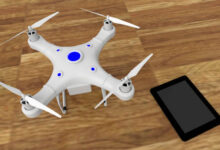
In a world where technology continually shapes the boundaries of what’s possible, the fusion of artificial intelligence (AI) and medical imaging has brought about a revolutionary leap in healthcare.
Imagine AI as a Sherlock Holmes for medical images, detecting patterns and anomalies that the human eye might miss.
In this article, we’ll delve into the process of crafting AI-powered tools that unravel the secrets hidden within medical images, enhancing diagnostic accuracy and patient care.
About the AI and Medical Image Analysis

Unveiling the Potential: The collaboration between AI and medical image analysis transcends human limitations.
According to Hindawi, AI algorithms can analyse thousands of images in seconds, allowing for swift and accurate diagnosis.
AI-Powered Precision: When AI works in tandem with medical professionals, it serves as a dependable companion, assisting in early disease detection, tracking treatment progress, and predicting patient outcomes.
Building Blocks of AI-Powered Medical Image Analysis Tools
Data Collection and Preprocessing
Quality Over Quantity: A robust AI tool requires a diverse dataset of medical images. These images serve as the building blocks on which the AI model will learn to differentiate between normal and abnormal patterns.
Preprocessing Magic: The collected images undergo preprocessing, which involves tasks like resizing, noise reduction, and enhancement. This ensures that the AI model focuses on the essential features.
Training the AI Model
Algorithms as Learners: Just like a student learning from textbooks, AI algorithms learn from data.
During training, the AI model is fed with labelled medical images, guiding it to identify specific characteristics associated with different conditions.
Fine-Tuning: After initial training, fine-tuning follows. This step refines the AI model’s ability to make precise distinctions, ensuring it doesn’t confuse similar patterns.
Validation and Testing
Accuracy Check: The AI model’s effectiveness is evaluated through validation and testing. A separate dataset, distinct from the training data, is used to ensure the model’s accuracy in real-world scenarios.
Integration into Medical Practice
Aiding Medical Professionals: The AI-powered tool is integrated into the workflow of medical professionals. It becomes a supporting partner in diagnosis, offering insights and flagging potential issues.
Benefits and Challenges
Advantages of AI-Powered Medical Image Analysis
Speed and Accuracy: AI can swiftly process and analyse a vast number of images, leading to quicker diagnosis and treatment decisions.
Consistency: Unlike humans, AI doesn’t experience fatigue, ensuring consistent performance even during long hours.
Early Detection: The National Institutes of Health says AI’s ability to detect subtle changes early on can lead to timely interventions and improved patient outcomes.
Challenges on the Path
Data Quality: AI models heavily depend on high-quality data. Inaccurate or biassed data can lead to incorrect conclusions.
Ethical Considerations: The use of AI in healthcare raises ethical questions, including patient privacy and potential biases in algorithms.
Real-World Applications
Early Detection of Diseases
AI-powered tools excel in spotting early signs of diseases like cancer, enabling timely interventions and higher survival rates.
Neurological Disorders Diagnosis
AI’s prowess in analysing brain scans aids in diagnosing conditions like Alzheimer’s and Parkinson’s disease at an early stage.
Customised Treatment Plans
AI can analyse genetic and medical imaging data to create personalised treatment plans tailored to each patient’s unique needs.
The Future Outlook
The journey of AI-powered medical image analysis is still in its infancy, with exciting possibilities on the horizon:
Enhanced Automation: AI can streamline repetitive tasks, allowing medical professionals to focus on complex decision-making.
Innovative Tools: As AI evolves, we can anticipate tools that not only analyse images but also predict patient responses to treatments.
Global Access: AI can bring advanced medical analysis to remote areas, bridging the gap between healthcare facilities.
Now it is time to look into some frequently asked questions (FAQs) about How to create AI-powered medical image analysis tools.
Are AI-powered medical tools replacing doctors?
No, AI tools complement doctors’ expertise, aiding in diagnosis and treatment decisions.
Can AI accurately diagnose complex diseases?
AI shows great promise in early detection of diseases, but doctors’ clinical judgment remains vital.
What role does data play in AI-powered analysis?
High-quality data is the foundation; accurate diagnoses depend on the accuracy of the data.
How secure is patient data in AI-powered tools?
Security measures are taken to ensure patient data remains confidential and compliant with regulations.
How does AI consider rare medical conditions?
AI models can be trained to recognize patterns associated with rare conditions, aiding in their diagnosis.
Conclusion
The marriage of AI and medical image analysis holds the promise of revolutionizing healthcare.
With AI-powered tools in their hands, medical professionals become superheroes, capable of detecting diseases earlier, delivering personalized treatments, and improving patient outcomes.
As technology continues to advance, AI stands as a beacon of hope, guiding us toward a healthier and brighter future. Thanks for reading.








